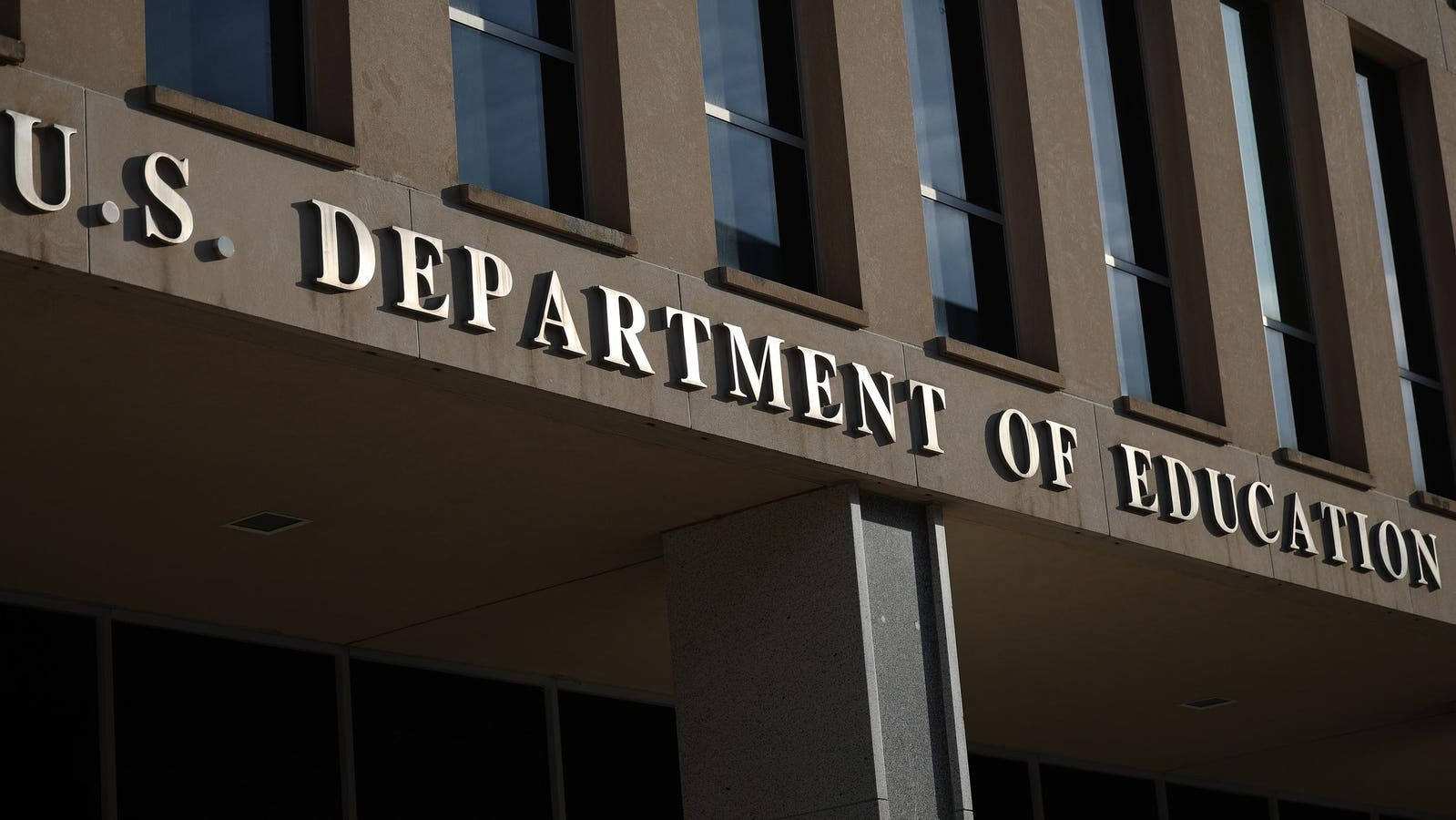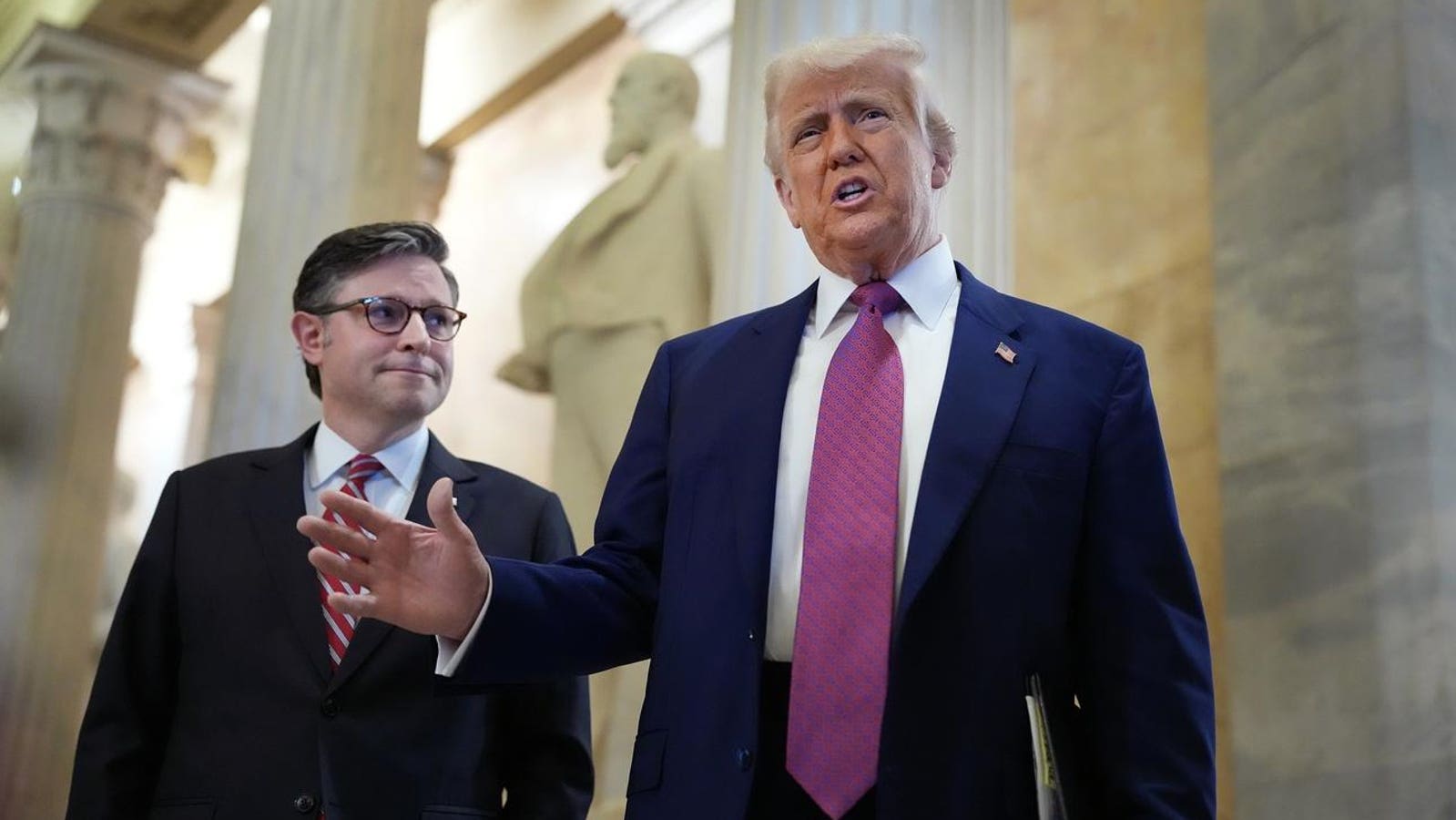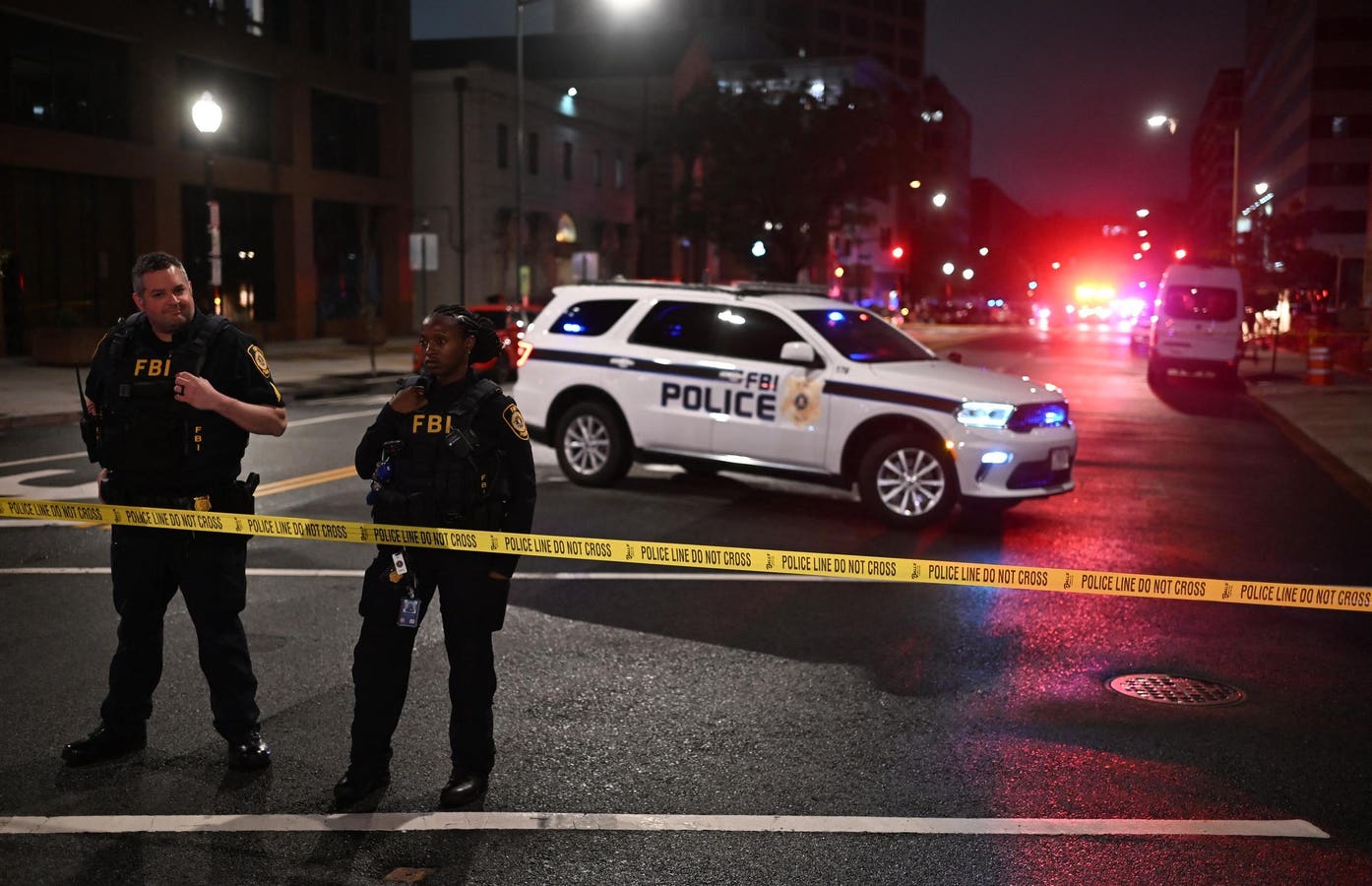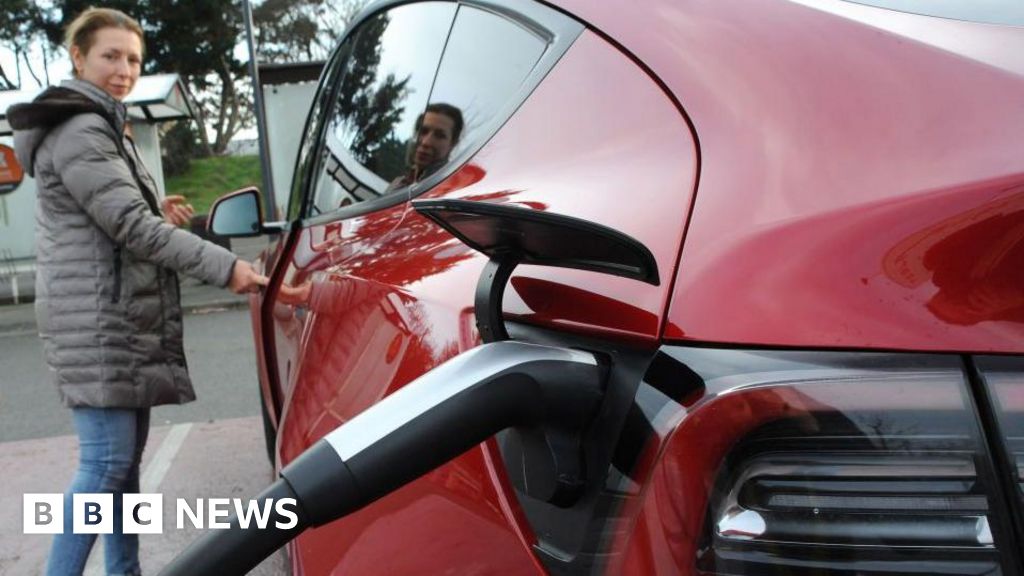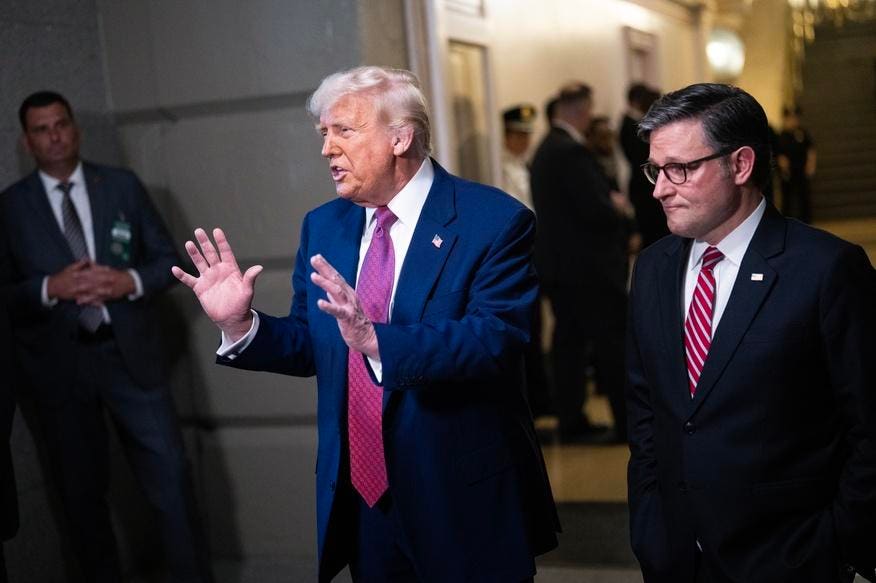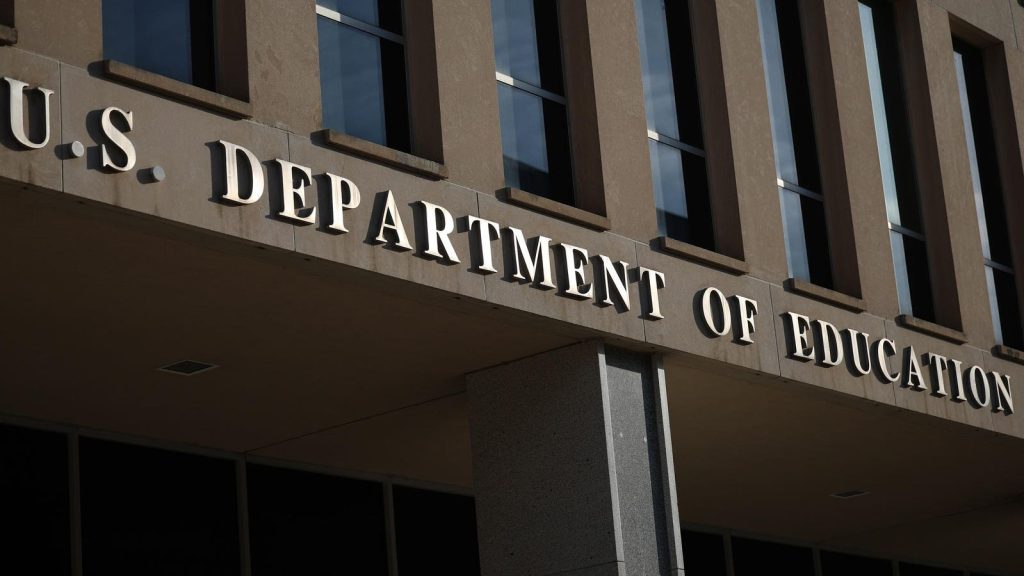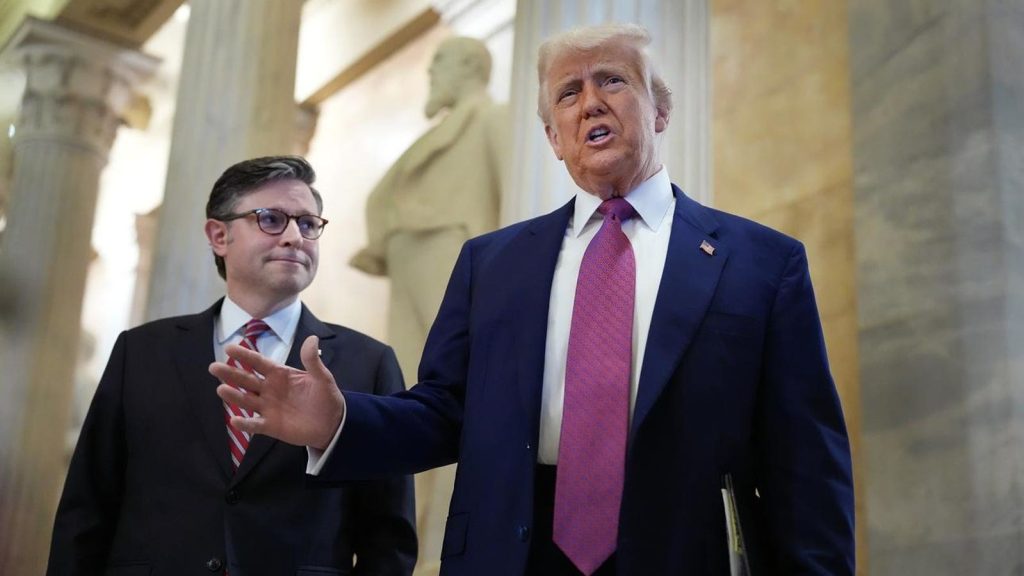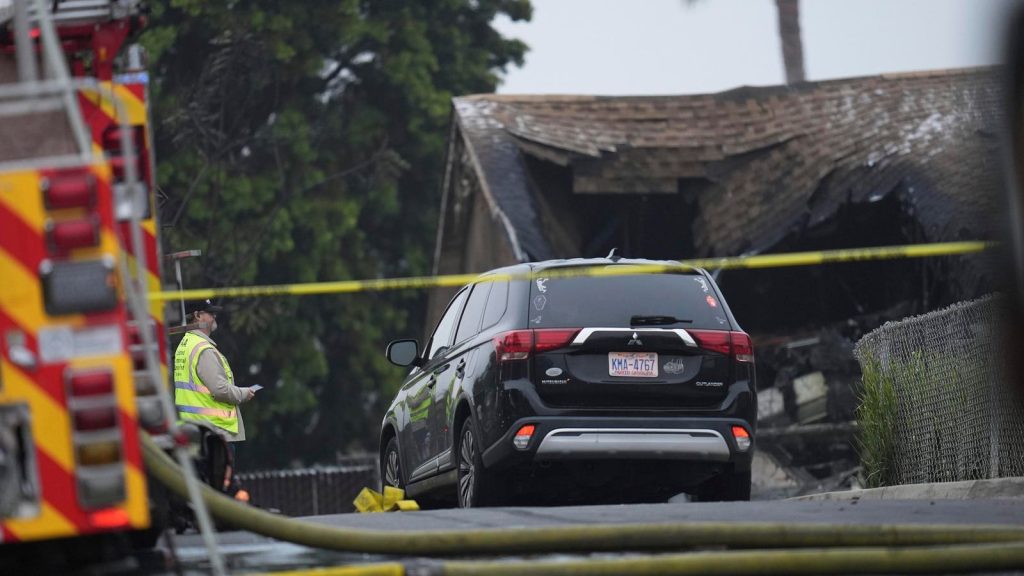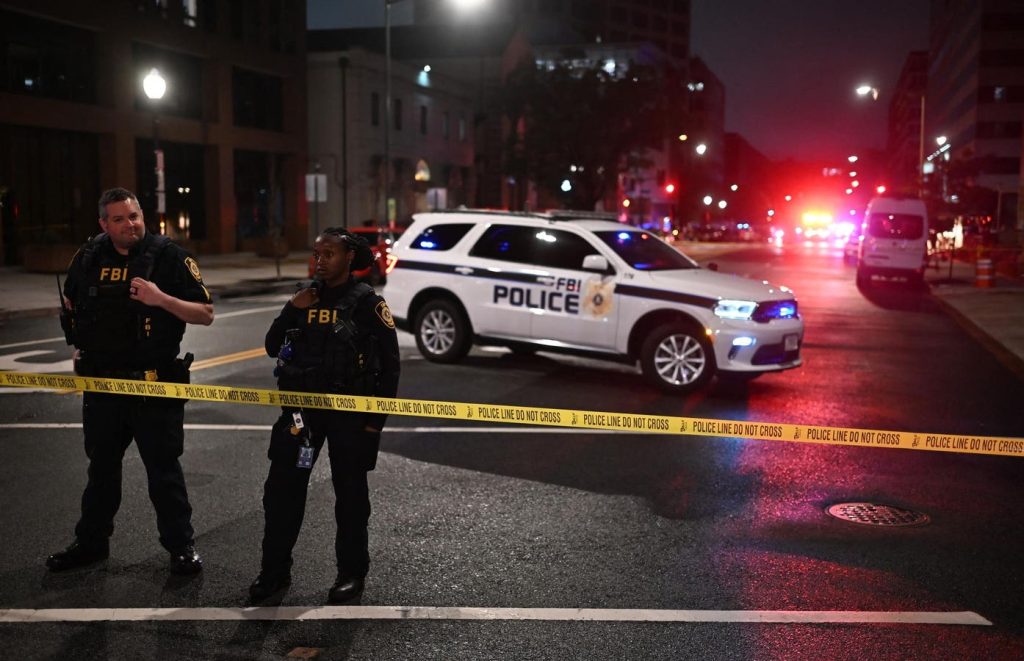Topline
The House narrowly passed President Donald Trump’s “one big beautiful bill” in a vote early Thursday morning.
U.S. Speaker of the House Mike Johnson (R-LA) returns to the U.S. Capitol Building after a meeting … More at the White House in Washington, DC.
Key Facts
The bill was passed just before 7:00 a.m. by a narrow margin of 215-214 after the House debated on it all night.
Two Republicans, Rep. Thomas Massie, R-Ky. and Warren Davidson, R-Ohio, voted no with all Democrats, while the chair of the right-wing Freedom Caucus, Rep. Andy Harris, R-Md. voted present.
Two other Republicans, Rep. Andrew Garbarino, R-N.Y., and Rep. David Schweikert, R-Ariz., did not vote.
What Would The Bill Due To Student Loans?
The bill as drafted Wednesday afternoon would abolish most student loan repayment plans and give borrowers only two options for paying their loans off: a standard repayment plan or a new plan based on annual income. The bill would also impose limits and restrictions on new loans and Pell Grants, which are given to “undergraduate students who display exceptional financial need.” (Read more about the bill’s impact on student loans here.)
What Would The Bill Do To Medicaid?
Trump’s bill would reduce spending on the Medicaid program by almost $700 billion, according to the Congressional Budget Office. The bill would add work requirements for people to be eligible for Medicaid—a joint federal and state program to help low-income people with health costs—a move that Democrats have said would cause millions of Americans to lose their health coverage, the Associated Press reported. The changes to Medicaid could cause as many as 7.6 million Americans to be uninsured in the coming years, according to data from the CBO.
What Would The Bill Do To Food Assistance?
The CBO estimated the bill would lead to a decrease of $267 billion in federal spending on the Supplemental Nutrition Assistance Program, or SNAP, which provides food benefits to low-income families.
What Would The Bill Do To Taxes?
Tax cuts are a central part of Trump’s budget bill, which contained more than $5 trillion in cuts and would make his 2017 tax cuts permanent, the AP reported. Under the terms of the bill, two-thirds of Americans would pay less in taxes by 2027, while about 25% would see no changes and 5% would pay more, according to Politico, which cited a report from the Joint Committee on Taxation. The bill includes a temporary increase of $500 to the child tax credit, a temporary $2,000 boost to the standard deduction, and it would raise the estate tax exemption to $15 million. It also includes a “no tax on tips” provision—something Trump campaigned on—similar to what passed in the Senate with no opposition earlier this week.
Key Background
Trump’s bill faced pushback from some Republicans, who expressed concerns over the $2.3 trillion it could tack on to the national debt, according to the Congressional Budget Office. Rep. Andy Harris, R-Md., questioned the ability to get a vote done on the bill Wednesday, saying “leadership is going to have to figure out… where to go from here,” according to CNBC. The Trump administration warned Republicans that failure to pass the bill would be “the ultimate betrayal,” issuing the statement a day after Trump said Republicans who vote against the measure “wouldn’t be a Republican much longer.” Trump made a rare appearance on Capitol Hill on Tuesday to urge Republicans to pass the bill.
What Happens Next?
The bill will go to the Senate, where multiple Republicans pushed for changes to the bill before it passed in the House. GOP members like Sen. Rand Paul, R-Ky., have sought larger spending cuts and reforms from the bill.
Further Reading
Forecasters: Most taxpayers would see tax cut under Republican plan (Politico)
What’s in Trump’s ‘beautiful’ bill that Republicans are trying to pass (Associated Press)


